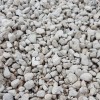Cart 0 Product Products (empty)
No products
Free shipping! Shipping
0,00 € Tax
0,00 € Total
Product successfully added to your shopping cart
Quantity
Total
There are 0 items in your cart. There is 1 item in your cart.
Total products
Total shipping Free shipping!
Tax 0,00 €
Total
Categories
FAQ
Avez vous besoin d'aide ? Consultez notre page dédiée aux FAQ.
Where and how should I plant my Lady's Slipper orchid ?
Published : 09/27/2016 15:35:44
Categories : Growing , Lady's Slipper

The best place for your Cypripedium orchid
Do not put your Cypripedium in direct sunlight or in places that are too damp like by the edge of a pond. Cypripedium like shaded (or semi-shaded) places and sunlight in the morning (until 10 o'clock). The north side is fine, and the ideal place is in the shade of shrubs. This plant grows well with small hostas, ferns and pulsatillas. Although the Cypripedium is a real orchid, it generally suffers more from the summer heat than from the winter cold.
Planting the Lady's Slipper orchid
We recommend that you re-plant your Cypripedium as soon as you receive it (except if it is in flower when you buy it, in which case we advise you to wait until flowering is over). It is not recommended to leave the orchid in the garden in its growing pot, because that makes it more sensitive to the heat and drought of the summer or the cold of winter.
Substrates to help you achieve successful clumps
When planting your orchids, it is advisable to make a plant pouch about 20 cm deep and 20 to 30 cm wide. For an optimal substrate, mix 1/3 of fine lava stone (pumice), 1/3 of compost for aquatic plants (which usually contains sand and clay) and 1/3 of soil from your garden.
The lava stone is very absorbent, and will help to keep your substrate moist (and therefore cool) during the summer period, while providing good drainage during periods of rain (avoiding surplus water).
To help you and facilitate the preparation of these clumps, Phytesia brings you 2 substrates this autumn:
Lava stone - pumice (5 kilo bag/14.90 euro) : The lava stone can be used according to the method set out below: This quantity (used in a ratio of 1/3rd) is suitable for planting 5 or 6 garden orchids.
Compost for Cypripedium, Dactylorhiza, Epipactis, ready-to-use mixture (5 kilo bag/14.90 euro) : Suitable for planting 2 garden orchids.


